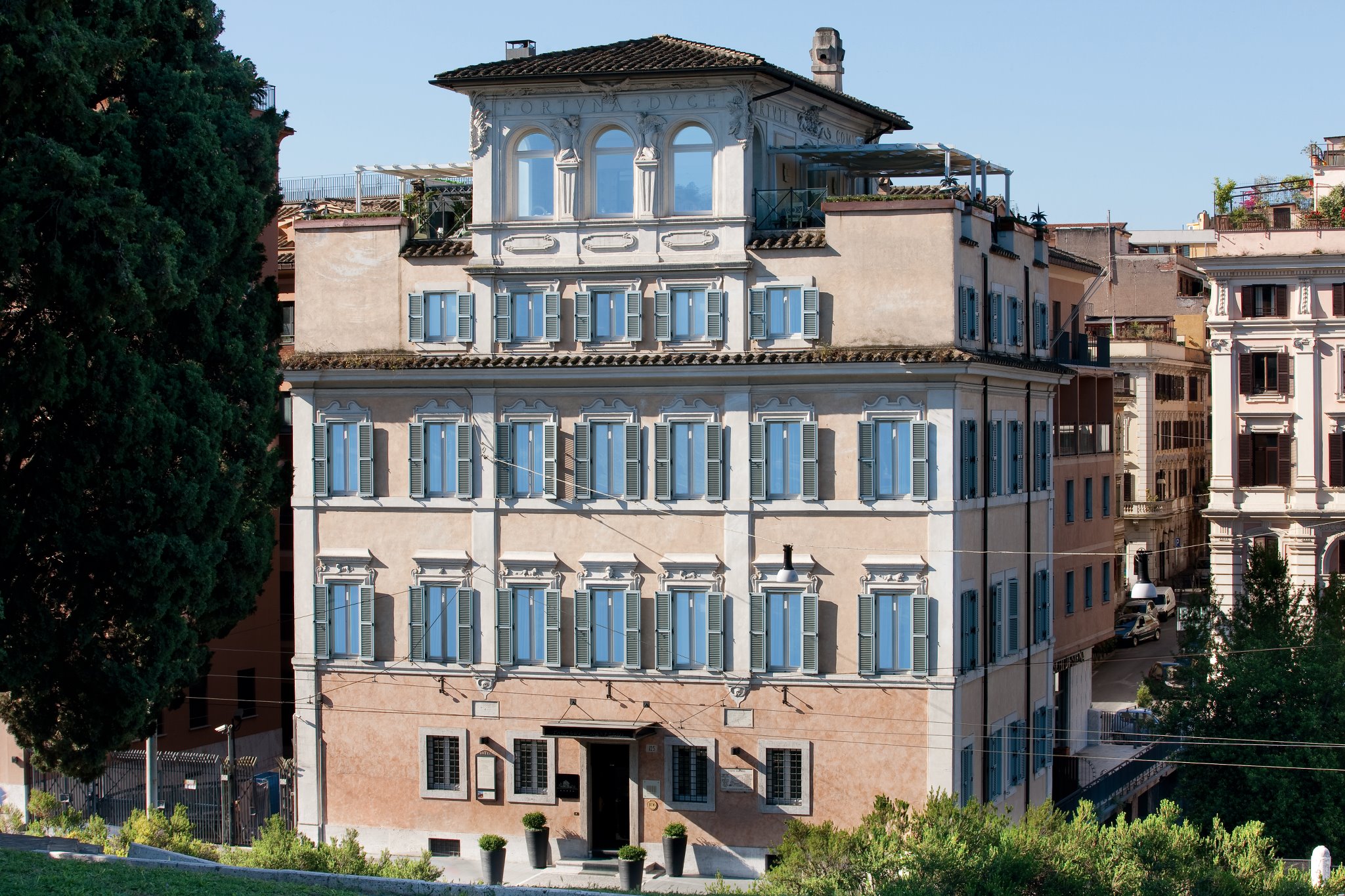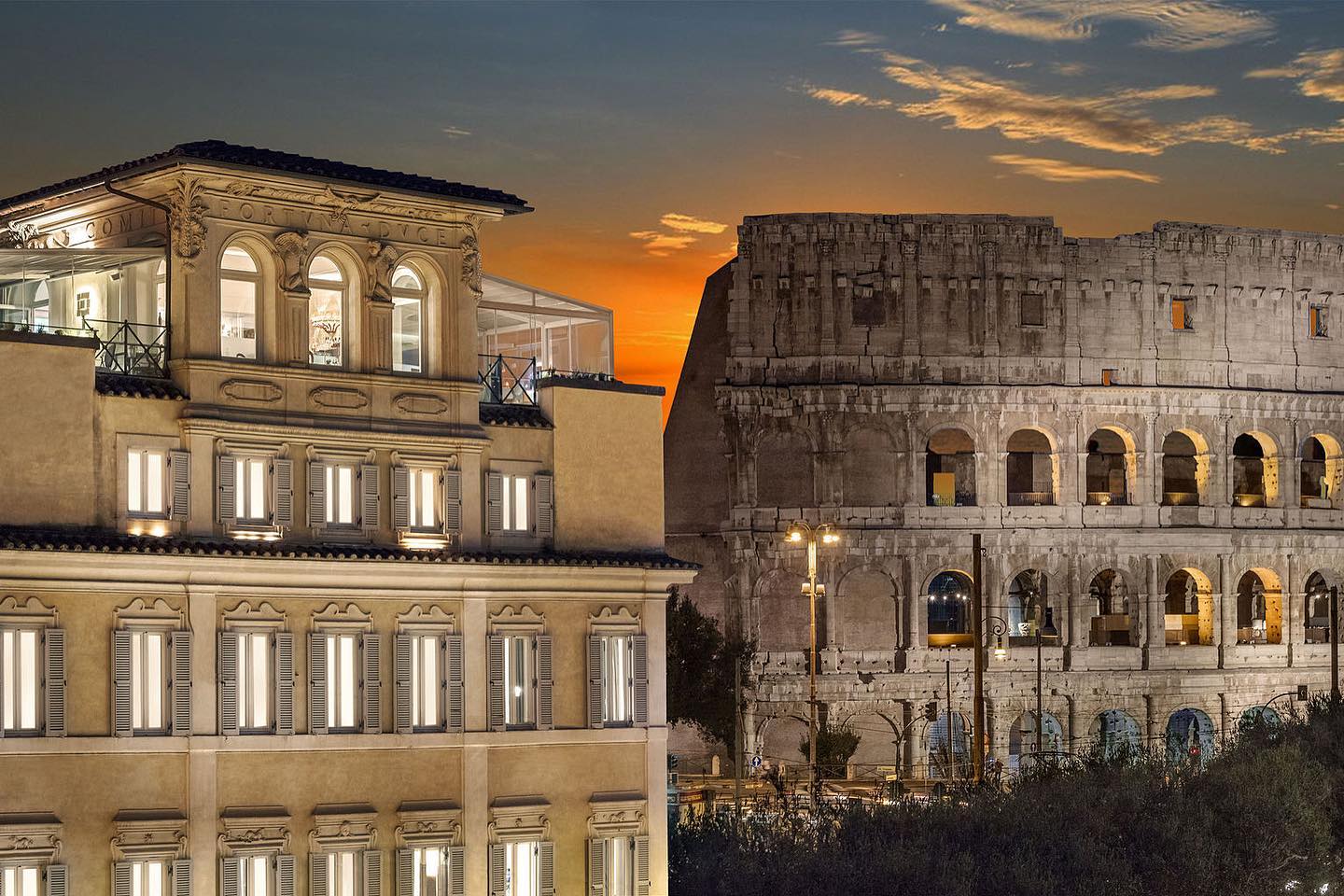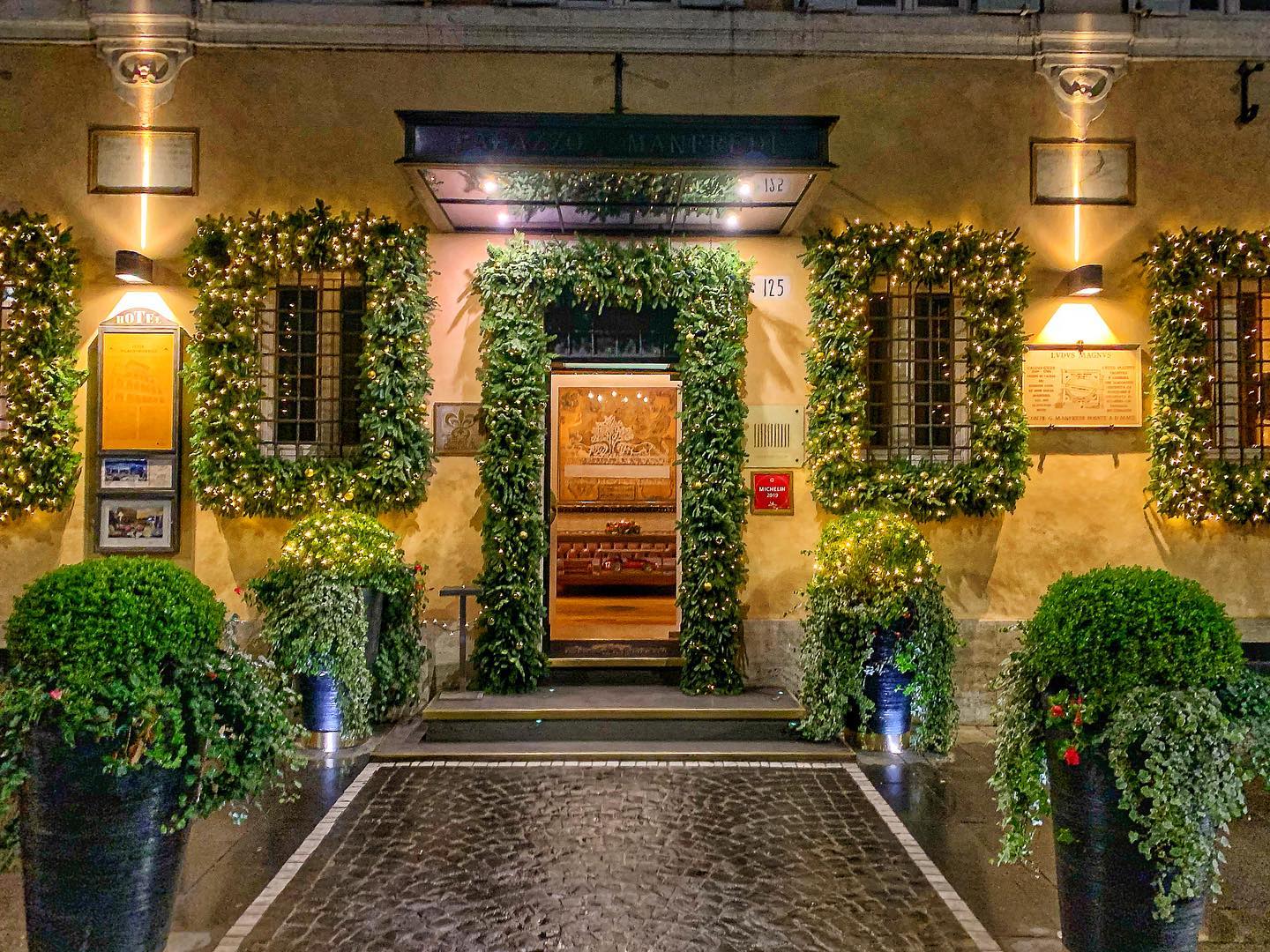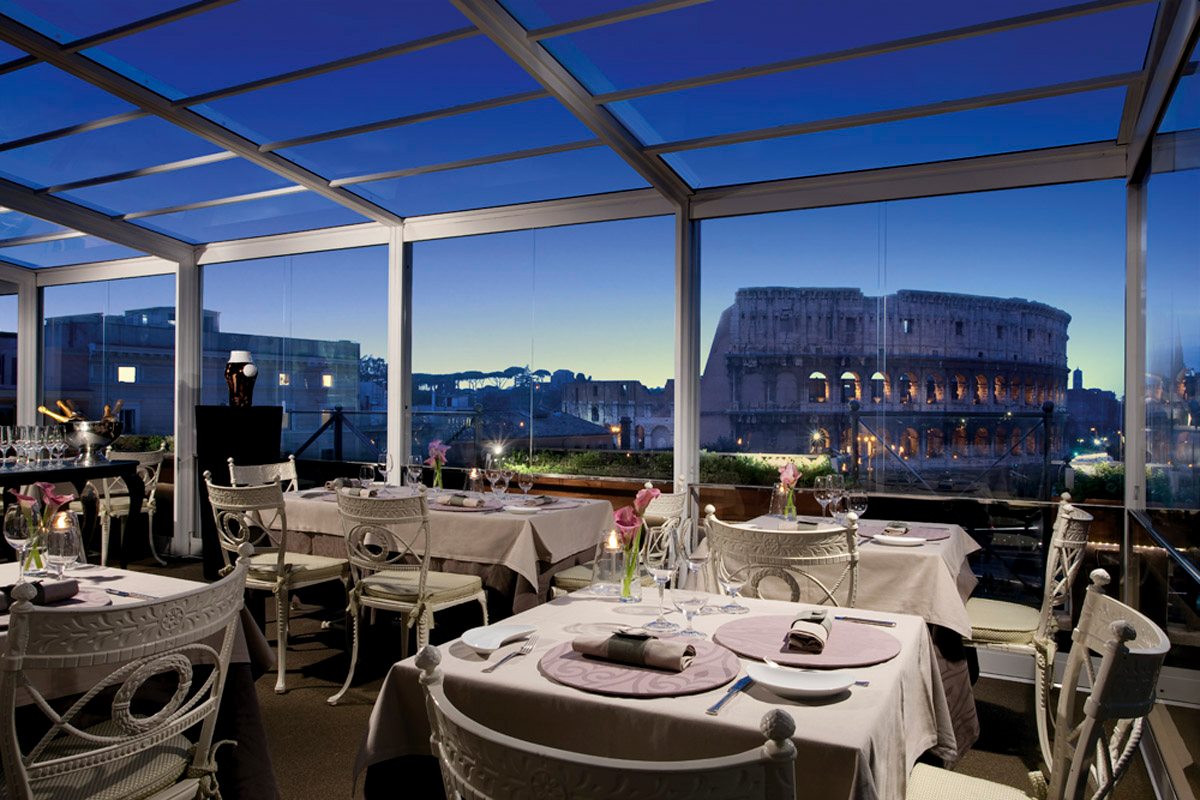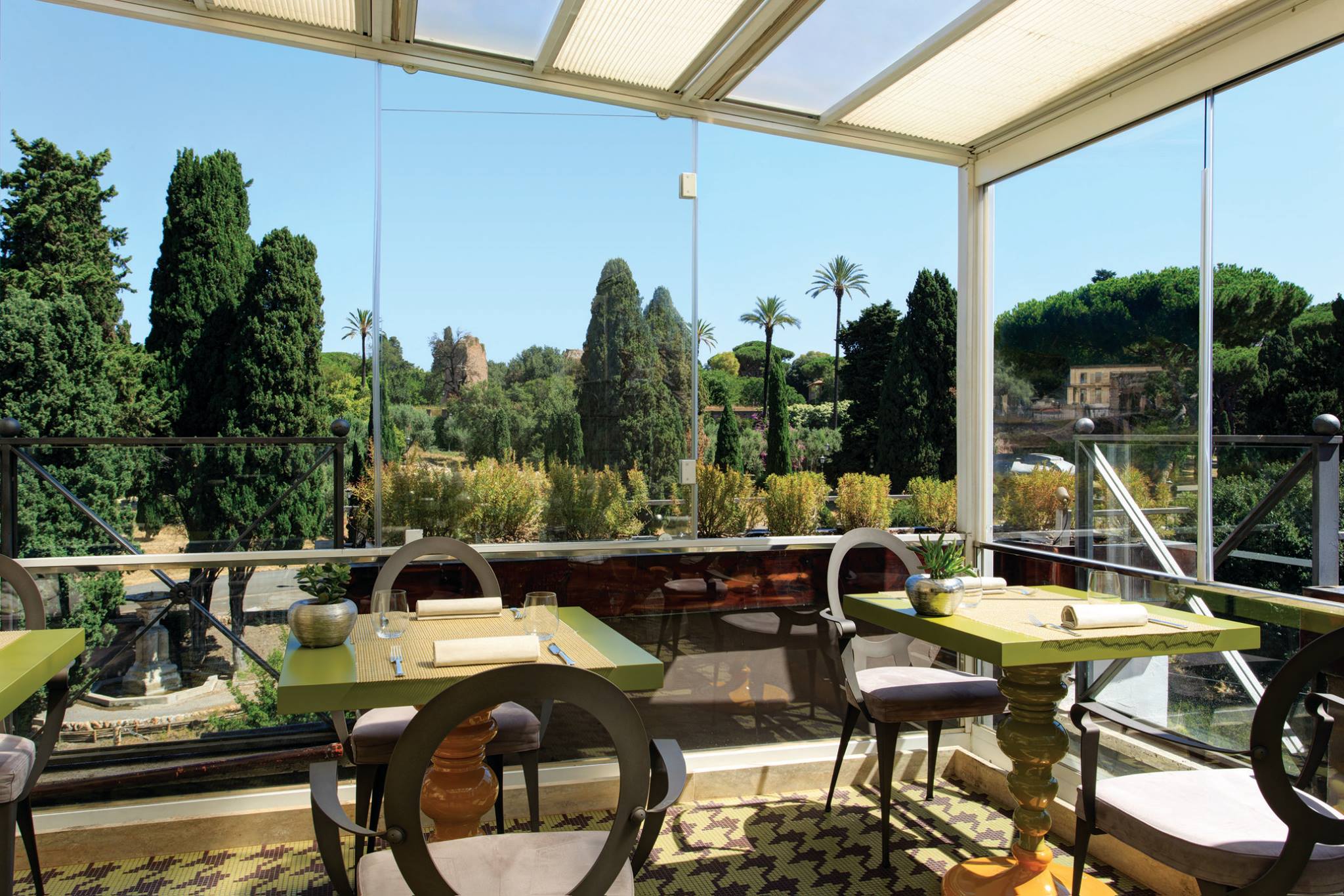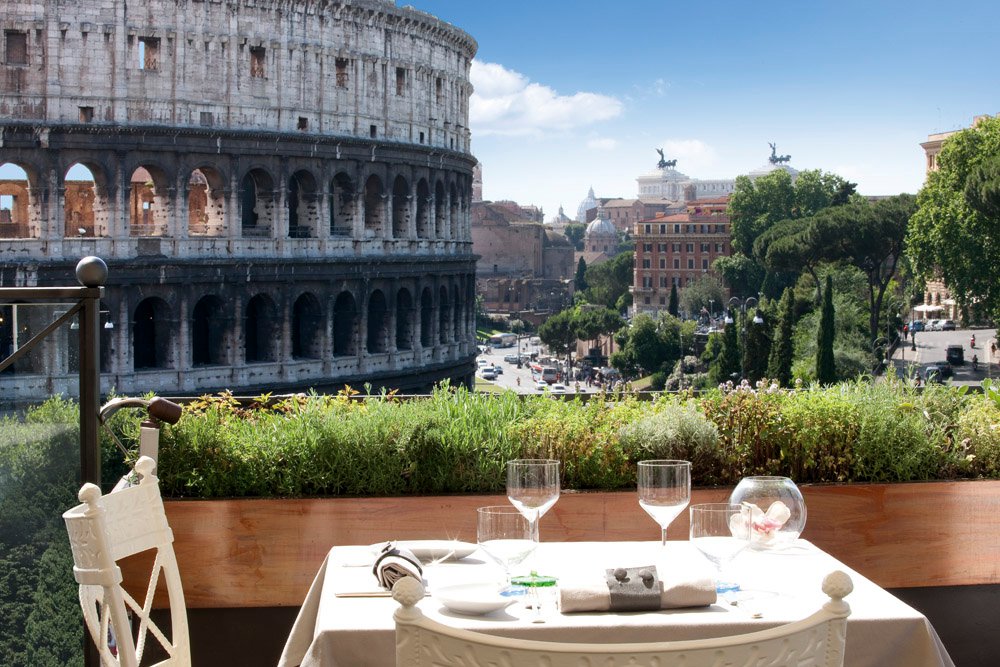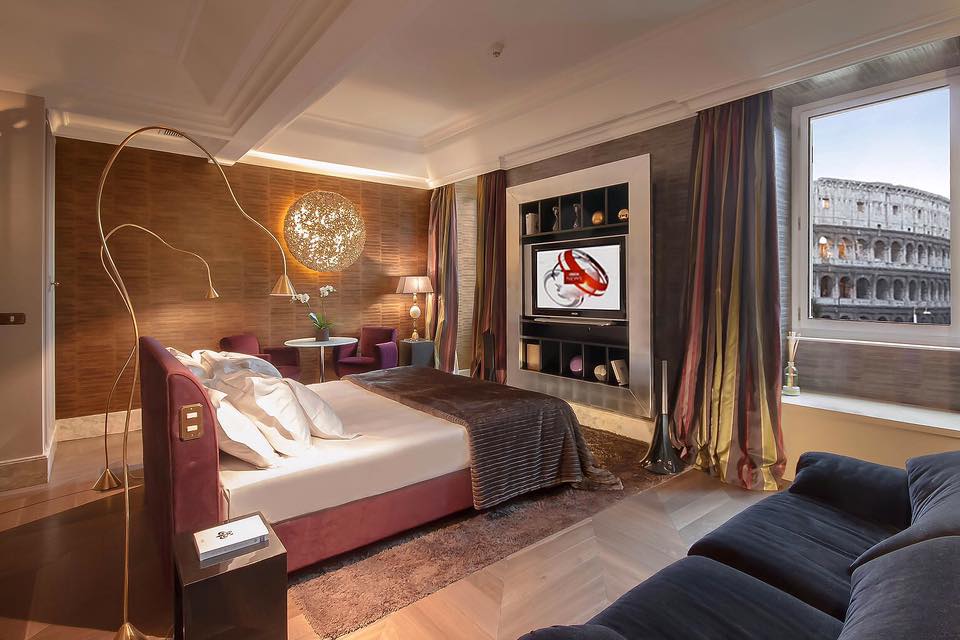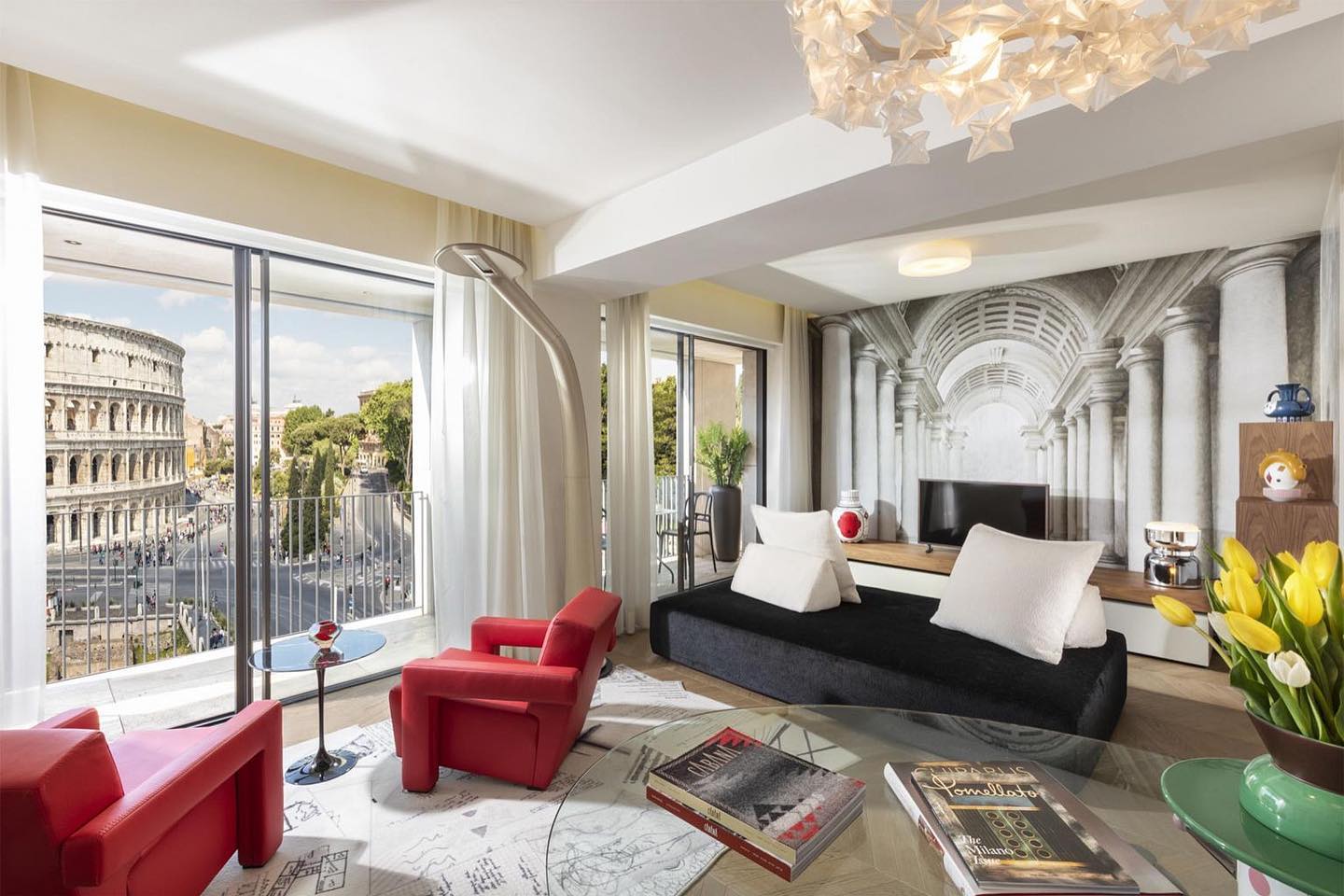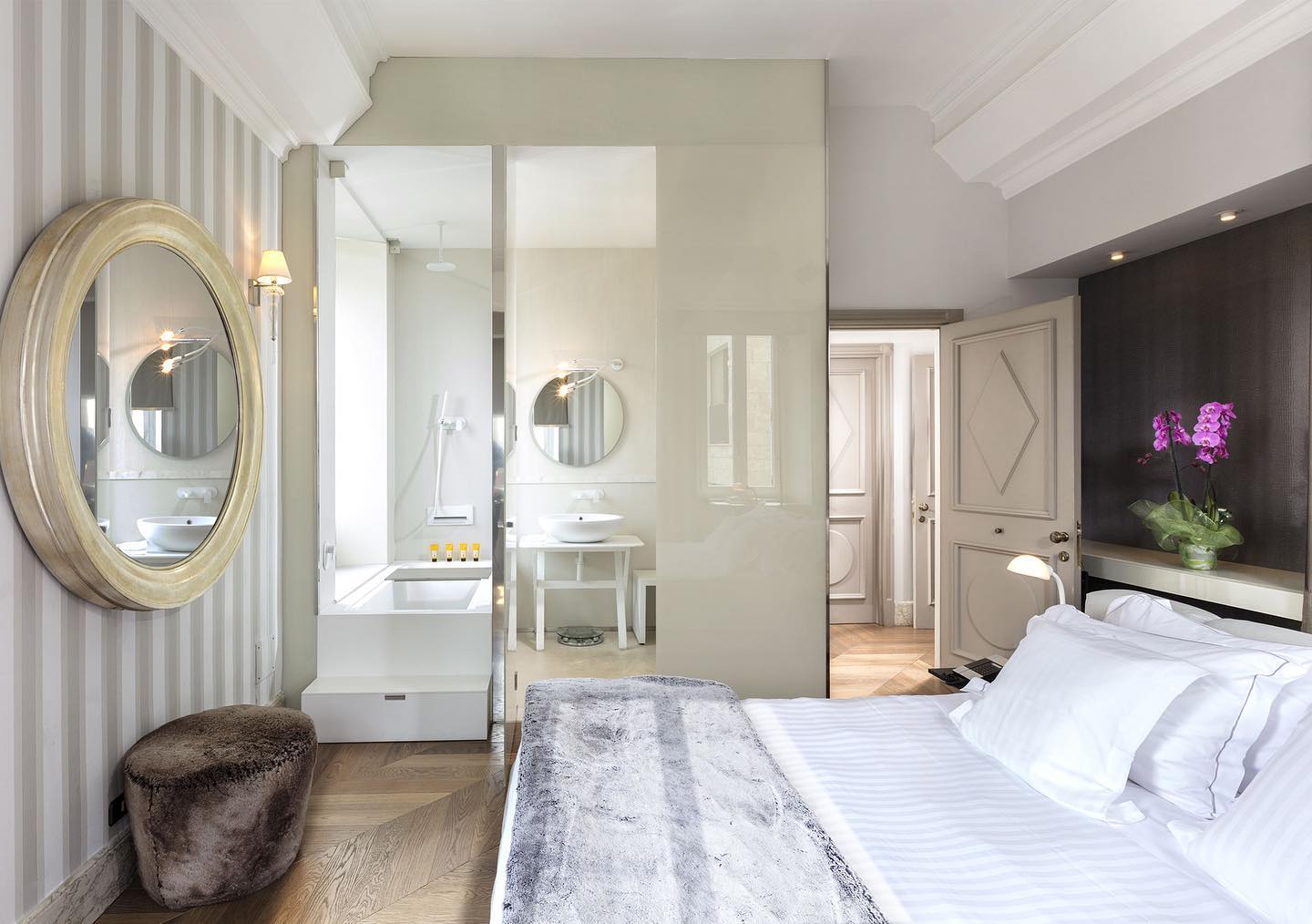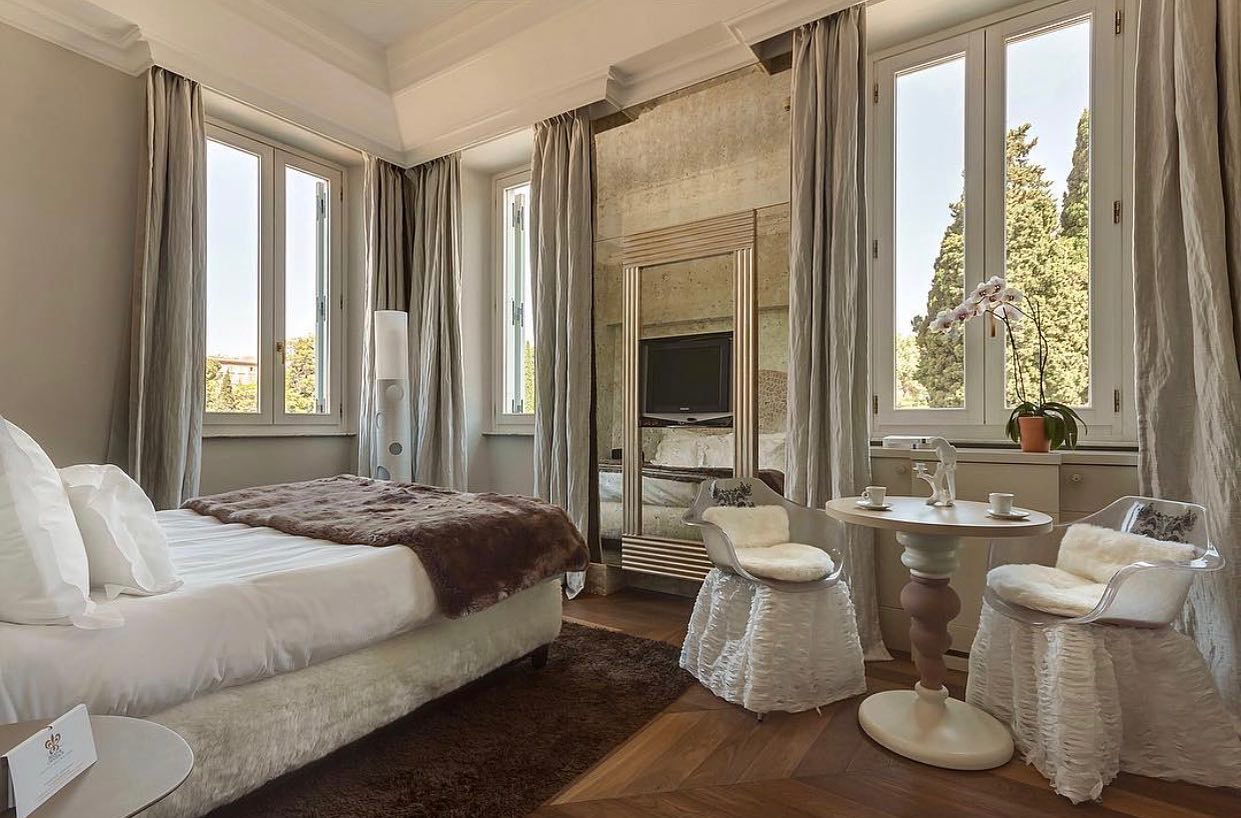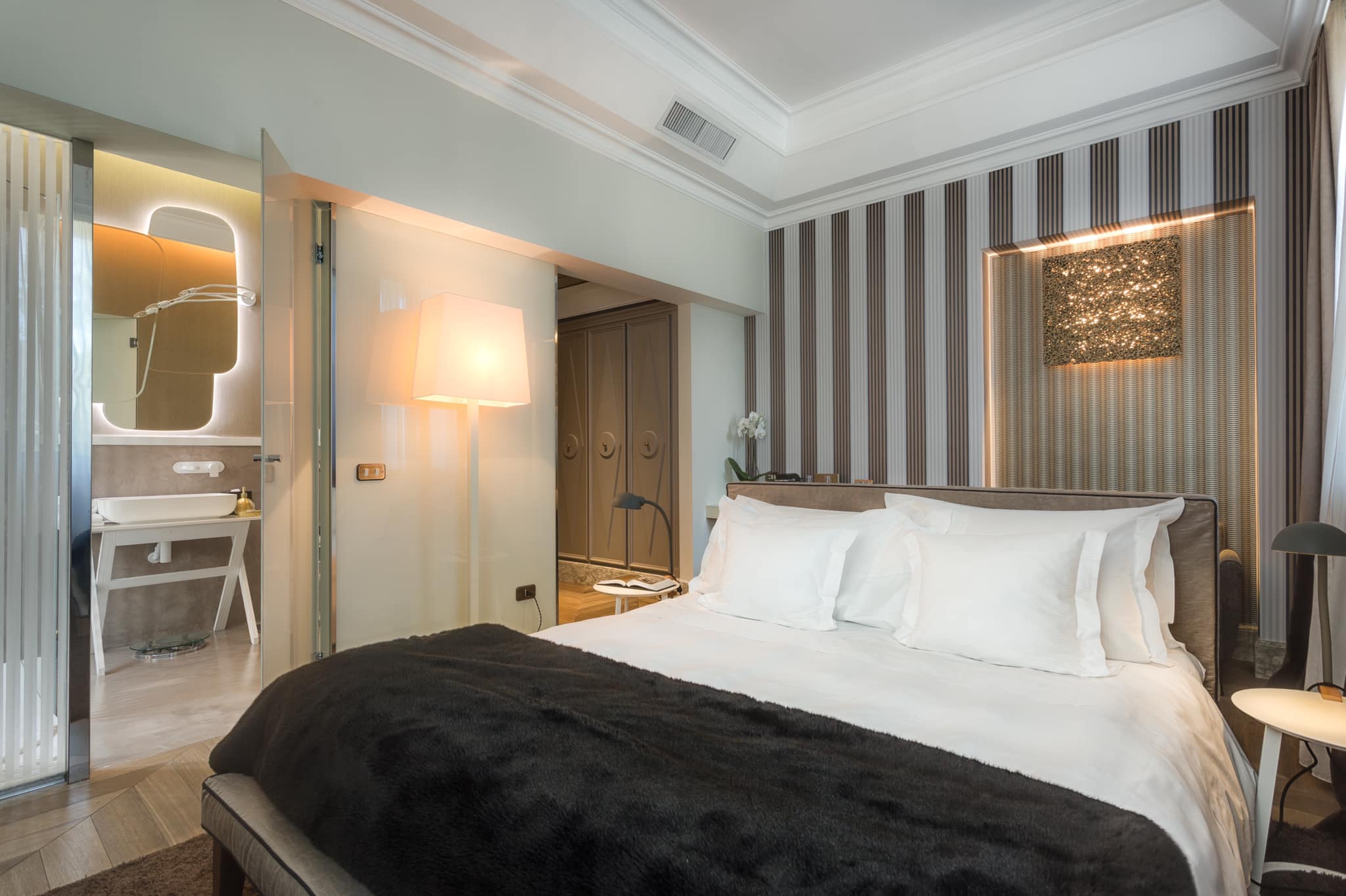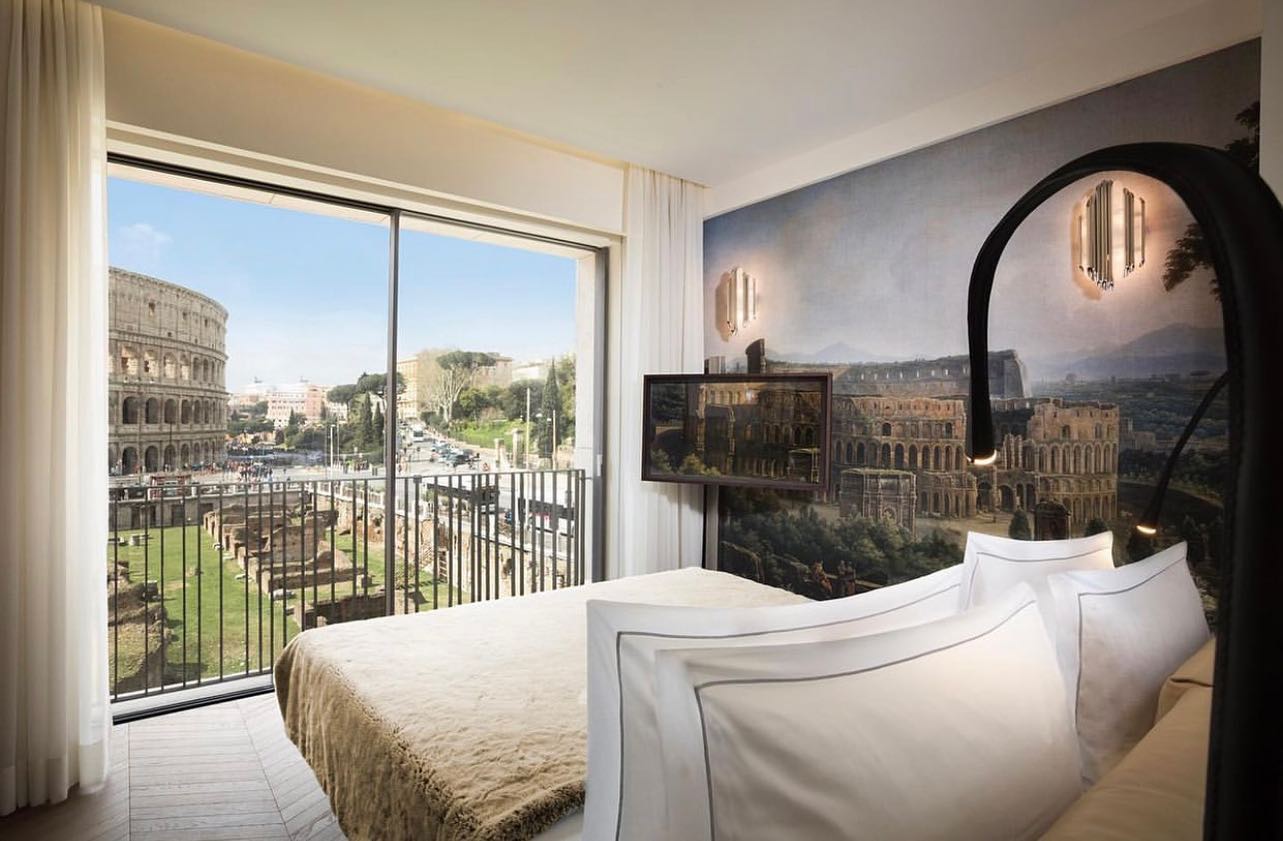PALAZZO MANFREDI HOTEL
In ancient Rome, just a few metres from where the superb Palazzo Manfredi boutique hotel now stands, were four barracks, accommodations and a training school for gladiators fighting in the Colosseum. In 1937, the remains of the largest gladiatorial school were discovered, the Ludus Magnus, located at the foot of our hotel. Twenty years later, an archaeological dig was started, finishing in 1961.
The splendid building of the Palazzo Manfredi began life in the 17th century as the villa of the Evangelisti family, designed by architect Giovanni Battista Mola. It then passed to the Venerabile Confraternita della Ss Trinità dei Pellegrini e dei Convalescenti (Venerable Fraternity of the Holy Trinity of Pilgrims and Convalescents), as commemorated by the two stones on the façade.
The villa was completely rebuilt in the 18th century, becoming the hunting lodge of the noble Guidi family and, from 1748, this area was known as “Giardino Guidi”.
In 2002, the villa was purchased by Count Goffredo Manfredi, one of Italy’s most famous entrepreneurs and construction magnates and, thanks to him, Palazzo Manfredi, our superb luxury hotel, was born. In commemoration of the past, and of the distinction of the noble Manfredi family, you can still read today two Latin inscriptions on the turret, “Fortuna duce”, with fortune as guide, and “Virtute Comite”, with virtue as companion, quoting Cicerone’s famous maxim.
Rome
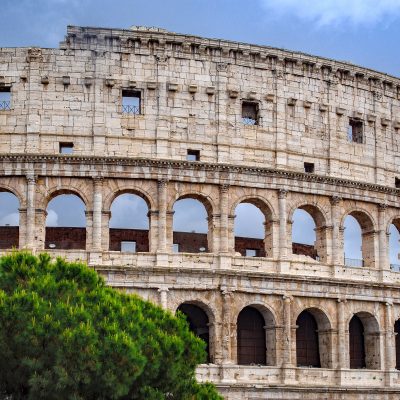
Rome can be romantic, not rushing anywhere, and hiding its secrets from prying eyes in the nooks and crannies of the city center. The main thing is to know where to turn. And suddenly from a noisy square or avenue you find yourself in another dimension. Where the street is narrow, on both sides of it huddle antique shops, small eateries or family stores.
The bustling metropolis opens up from a different angle and feels as if time has stood still and life is flowing as it did centuries ago. Cobblestone cozy streets, terracotta-colored facades, small squares and hidden from prying eyes cozy janitors, where next to a motorcycle there is an antique sarcophagus, adapted as a fountain for the needs of the inhabitants, and the walls of houses are decorated with fragments of ancient bas-reliefs and fragments of statues.
Nightlife info
At nightfall, Rome is transformed as evening lights illuminate its monuments, ancient buildings and ancient ruins of forums. The crowns of the pine trees take on a rich emerald colour. Rome takes on a whole new dimension: it's an enchanting spectacle at this hour. Light shines through the gloom, revealing all that is important. The hustle and bustle of the day gives way to the solemn grandeur of the evening, time slows down and the attentive traveller sees the city as a box of shimmering jewels.
At this fascinating and magical time of day, we invite you to take a fascinating and comfortable drive excursion some of the jewels of the Eternal City. You will see the Cathedral of Santa Maria Maggiore, the Cathedral of San Giovanni in Laterano, the Colosseum, Piazza Venezia, St Peter's Cathedral, St Angel's Castle, the Trevi Fountain. Romantic mood, beautiful photos and maximum comfort are guaranteed.
Culture and history info
According to the most widespread legend, the brothers, born of the daughter of King Rhea Sylvia and the god Mars, grew up on the banks of the Tiber. After restoring their grandfather Numitor to the throne of Alba Longa, Romulus and Remus returned to the Tiber to establish the colony. A quarrel arose between the brothers: Romulus killed Remus and founded a fortified settlement on the Palatine. In I century B.C. it has been calculated some dates of foundation of Rome, the most known of which - on April 21, 753 B.C.
Romulus is called the first king of Rome. A total of seven kings are named by tradition.
Read more

